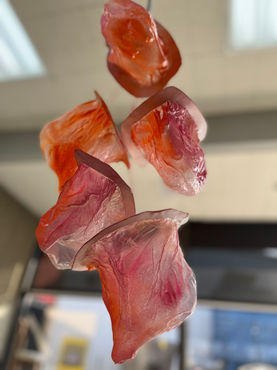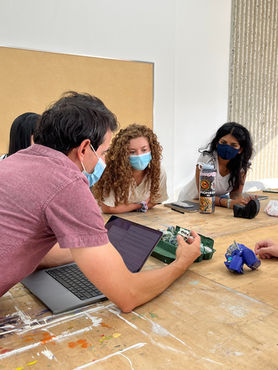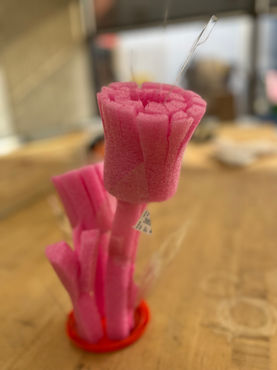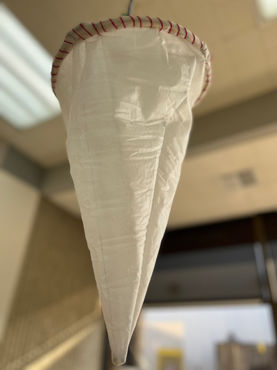EXPLORE JONATHAN LOUIS PRODUCTS
By Collection
By Product

Jonathan Louis x Otis College of Art & Design Class
Developing the next generation of talent is a big part of our ethos (see here, and here for our talent development series). We’ve extended our efforts outside of our four walls to Otis College of Art & Design. From installations to trends, Otis students have been active participants in our market-focused endeavors.
This fall, we’ve expanded our collaboration with Otis College to sponsoring a Product Development Studio I class. Open to third-year students, the class is a hands-on, “project-based course bringing consumer products from concept to market.” The goal of class is to better understand how to incorporate practicalities like manufacturing into the design, and “to gain a greater understanding of how to translate a concept into a product for sale in the market.”
Projects include individual home decor and the Jonathan Louis sectional group project. At the end of the semester, we will select one team’s concept, and work with them to build a final piece to display at Spring 2023’s High Point Furniture Market. Follow this blog to see the progress of these students as they deconstruct, explore, play, ideate, and create.
Trash Project
Theme: "Potential"
Using “trash” objects brought in by fellow students, the students were tasked with creating something that would be considered “decor.” “Trash” can include anything: a mirror, no longer functioning electronics, cardboard box, old shoe, etc. In class, they discussed tapping into the potentiality of materials, regardless of provenance. When the projects were discussed, the group considered the materials, the thought process and actual execution, as well as ways to elevate or potentially sell the objects.
Do you agree with the interpretations? What would you have done with the same materials?
Jason
Was: Game controller
+ wire + screws
Is: "Unknown"
In-class observations:
We’re not sure how to hold this–how do we interact with it? It varies by how it looks to us when we approach it; it’s playful, surprising, interactive, you feel compelled to rotate it.
There’s an opportunity to leverage the screws differently, or the wire differently–is there a way to create a pattern that seems more intentional? You’ll need to be able to communicate to a client why you're making these decisions and be able to convince the client that the concept or decision is intentional (even if it’s not).
'Extra Credit":
The experience with interacting with the object is like that of E.T. in E.T. the Extraterrestrial first exploring Elliott’s room. (Editor’s note: a whole class of students and not single person understood the reference.)
Abigail
Was: Plastic bag+ pencil sharpener + book (which was mostly used as inspiration)
Is: "Jellyfish"
In-class observations:
The plastic bag (which was hot gunned over the pencil sharpener to create the unusual shape) has been completely disguised–there’s no sense as to the origin of the plastic. Even though the string here is spray painted to match the plastic bits, would monofilament be a future choice so that the objects look like they’re floating?
Idea for presentation: Hang it next to the pencil sharpener and book to complete the story.
“Extra credit”:
The object is reminiscent of the creations of the artist, Louise Bourgeois, in that it is a beautiful-yet-uneasy exploration of materials.
Dillon
Was: Sneaker
+toy car
+plastic wrap
Is: "Face" or "Mask"
In-class observations:
This could be developed into a great collector’s item for sneakerheads (editor’s note: not the limited editions, they would have a heart attack if you cut it up).
As part of a series, each one could be unique–the next iteration would use every part of the shoe to make a flamboyant mask. It’s an expressive face—even if you made 100 faces, you'd have different personalities for each shoe. This could be great for advertising, like a campaign built around “which face is your personality?”
"Extra Credit":
The Colossal website, which celebrates the exploration of material, was referenced.
Cristana
Was: Surfboard leash + string + shower curtain
Is: "Lamp Shade" or "Windsock/Chime"
In-class observations:
It would've been interesting if color was added to the inside layer–when the wind blows or it moves, you’ll be able to see the inner layer.
Consider: where is the point contact, how do you want it to hang? If we increase it to three points of contact, would the object be more level? Or is this intentionally tilting? If it is intentional, make sure it’s obvious. And if you don’t want it to tilt, make sure it absolutely doesn’t.
“Extra credit”:
This reminds the viewer of Body Worlds which focuses on layers peeling back to reveal more layers…of the human body.
Emily
Was: Humidifier (glass)
+foam sheets (cut into strips)
+tape
Is: "Hanging planter"
In-class observations:
The packing foam sheets cut into strips illustrate the potential to turn material that is neither nice nor elegant into something beautiful. The final product elevates the basic material.
How can we push the limits of this design? What else can be done with the glass? Can I add marks to it with paint or a sharpie? Can I drill into it (without shattering it)? Push further with the material–what happens if I twist the foam?
This could be good for air plants, as there’d be a nice contrast in color between the monochromatic piece and the color of the plant.
Alex
Was: Egg carton
+ NIKE sneaker
+ bubble wrap
Is: "Unknown"
In-class observations:
It looks like food in a carton—the cut up sneaker feels like sushi.
It could be commentary about NIKE’s production process, or about how a consumer literally and figuratively consumes products (for example, we all have plastic in our body). This could become some sort of toy or executive desk toy—beautiful, weird, curious, maybe satirical, and meant to make a comment about objects. It would be a good conversation starter, as a lot of different people would have different ideas about it.
“Extra credit”:
It would be interesting to include “nutrition facts” about shoes, like how many shoes we go through around the world, or what is the impact of consumption to emphasize the statement on consumerism.
Audrey
Was: Cap of the Tide pod box
+Driscoll's strawberry container
+pool noodles
Is: "Flower"
In-class observations:
Ikebana, which as the inspiration for this piece, usually focuses the attention on the vessel, but with this object, the focus is on the flower. It “flips the script,” challenging expectations.
The plastic shards are scary, as it looks like you could cut yourself on it if you get too close—which could potentially be a commentary of the future of flowers, our plastic production, and our current environmental state.
The way it’s tilting feels very natural. It gives the feeling of a real flower, but the flower is not at all like a real flower, there’s a bit of curiosity about it.
"Extra Credit":
It’s almost Seussian in proportions.
Anushka
Was: Cardboard + fabric
+ electrical tape
+ embroidery ring
Is: "Cellphone charger/holder" & "Car trash receptacle"
In-class observations:
It bears some resemblance to Native American fishing nets. But it is also very much like a Halloween candy bag. The cone is very intentional, clearly meant to respond to some physical space. The first object, the cell phone charger/holder, resembles an actual chair as a resting place for the phone, complete with a cutout for the charging cable.
“Extra credit”:
Dunce caps and Harry Potter’s Sorting Hat were suggested as lookalikes.
.png)





























